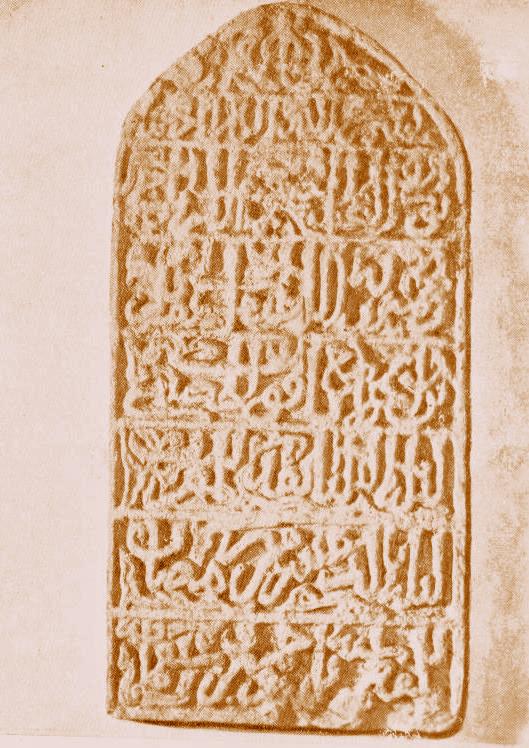@Apollo
This is what I mean when I say you don't need to respect the conventional rules of the Arabic script (like being an abjad) for Af Soomaali and that it can work perfectly. Here is a Soomaali version made by a rando laymen like myself:
B - ﺏ
T - ﺕ
J - ﺝ
X - ﺡ
Kh - ﺥ
D - د
Dh - ذ
R - ر
S - س
Sh - ش
C - ﻉ
F - ف
Q - ﻕ
K - ﻙ
G - كَ
L - ﻝ
M - ﻡ
N - ن
W - و
H - ه
Y - ﻱ
E - ى
EE - ىَ
I - إ
II - إِ
O - ؤ
OO - ؤَ
U - وُ
UU - وَُ
A - ا
AA - آ
Then you just write phonetically like with the Latin variant of Somali using the above letters and basically insert vowels in a manner you otherwise wouldn't with the Arabic script. Below are examples using news article titles:
Doorashada Soomaaliya: Maxay ka dhigan tahay in askar badan ay noqdaan xubno baarlamaan?
دؤَرؤشادا سؤَمآلإيا: ماحاي كا ذإكَان تاهاي إن اسكار اي نؤقدآن حوُبنؤ بآرلامآن؟
"Wiilkeyga iyo mid aan adeer u ahay ayaa dagaalka lagu dilay haddana nabaddaan ka shaqeynayaa"
وإِكىكَا إيؤ مإد آن ادىَر وُ اياي ايآ داكَآلكا لاكَوُ دإلاي هادانا نابادآن كا شاقىينايآ
Ruushka: Muxuu damacsan yahay Putin, waa kan ciidammadiisa heeganka geliyee?
روَُشكا: موُحوَُ داماعسان ياهاي بوُتإن، وآ كان عإِدامادإِسا هىَكَانكا كَالإيىَ؟
And here are some Somali names:
Male names
Rooble رؤَبلى
Warsame وارسامى
Samatar ساماتار
Faroole فارؤلى
Liibaan لإِبآن
Female names
Asili اسإلإ
Ladan لادان
Hodan هؤدان
Ayaan ايآن
Sagal ساكَال
You telling me you prefer Latin goofery to this? And look at the calligraphy waiting for us, niyahow:




Not to mention that this is the writing script our ancestors used both for its original Arabic and for Af-Soomaali for about a millennia at least:

 en.wikipedia.org
en.wikipedia.org
When Ibn Battuta came to our peninsula in 1331 he describes how the people from Saylac (سايلاع) down to just south of Xamar (حامار) are dark-skinned Shafi'i Muslims who herd camels and sheep (obviously Somalis) and that the Sultan of Xamar at the time who is one of these people speaks "Mogadishan" (Somali) and "Arabic" and clearly recounts an instance where the Sultan writes things down in Arabic:

 www.visitmogadishu.com
www.visitmogadishu.com
Alongside the extremely early evidence of masjids along the Somali coast:

 link.springer.com
link.springer.com
And the fact that to this day, like in the 1800s and 1900s below- :
-even many rural Somalis know how to read the script despite being illiterate in the Latin script and their own language as they get taught how to read the Qur'an using those wooden boards you see. There's so much history and culture between us and this script, niyahow. Not to mention how beautiful it is and now that you can see it can easily be repurposed for Soomaali I hope you will cease this Latin coonery. Allah bless!
This is what I mean when I say you don't need to respect the conventional rules of the Arabic script (like being an abjad) for Af Soomaali and that it can work perfectly. Here is a Soomaali version made by a rando laymen like myself:
B - ﺏ
T - ﺕ
J - ﺝ
X - ﺡ
Kh - ﺥ
D - د
Dh - ذ
R - ر
S - س
Sh - ش
C - ﻉ
F - ف
Q - ﻕ
K - ﻙ
G - كَ
L - ﻝ
M - ﻡ
N - ن
W - و
H - ه
Y - ﻱ
E - ى
EE - ىَ
I - إ
II - إِ
O - ؤ
OO - ؤَ
U - وُ
UU - وَُ
A - ا
AA - آ
Then you just write phonetically like with the Latin variant of Somali using the above letters and basically insert vowels in a manner you otherwise wouldn't with the Arabic script. Below are examples using news article titles:
Doorashada Soomaaliya: Maxay ka dhigan tahay in askar badan ay noqdaan xubno baarlamaan?
دؤَرؤشادا سؤَمآلإيا: ماحاي كا ذإكَان تاهاي إن اسكار اي نؤقدآن حوُبنؤ بآرلامآن؟
"Wiilkeyga iyo mid aan adeer u ahay ayaa dagaalka lagu dilay haddana nabaddaan ka shaqeynayaa"
وإِكىكَا إيؤ مإد آن ادىَر وُ اياي ايآ داكَآلكا لاكَوُ دإلاي هادانا نابادآن كا شاقىينايآ
Ruushka: Muxuu damacsan yahay Putin, waa kan ciidammadiisa heeganka geliyee?
روَُشكا: موُحوَُ داماعسان ياهاي بوُتإن، وآ كان عإِدامادإِسا هىَكَانكا كَالإيىَ؟
And here are some Somali names:
Male names
Rooble رؤَبلى
Warsame وارسامى
Samatar ساماتار
Faroole فارؤلى
Liibaan لإِبآن
Female names
Asili اسإلإ
Ladan لادان
Hodan هؤدان
Ayaan ايآن
Sagal ساكَال
You telling me you prefer Latin goofery to this? And look at the calligraphy waiting for us, niyahow:




Not to mention that this is the writing script our ancestors used both for its original Arabic and for Af-Soomaali for about a millennia at least:

Wadaad writing - Wikipedia
 en.wikipedia.org
en.wikipedia.org
When Ibn Battuta came to our peninsula in 1331 he describes how the people from Saylac (سايلاع) down to just south of Xamar (حامار) are dark-skinned Shafi'i Muslims who herd camels and sheep (obviously Somalis) and that the Sultan of Xamar at the time who is one of these people speaks "Mogadishan" (Somali) and "Arabic" and clearly recounts an instance where the Sultan writes things down in Arabic:
The sultan of Mogadishu was Abu Bakr ibn Shaikh Umar. He was Barbara amd spoke the local language of Mogadishu, but he also knew Arabic. Battuta was introduced to the Sultan by the “qadi” Ibn al-Burhãn, an Egyptian. After sending a message via a student to the Sultan, the student returned with a plate containing betel leaves and areca nuts, and a sprinkler that contained Damascas rose water.
...
A meal is served and it is a sign of honor when people were invited to join the meal. Afterwards, the court session began. The Sultan retired to his house while the “qadi” heard cases involving the “shari’a” (religious law) and the council of ministers (“waziers” and “amirs”) heard civil cases. When the Sultan’s opinion was required, the court sent a written request and he replied by writing on the back of the note and returning it.

Ibn Battuta Travels to Mogadishu City In 1331. | Visit Mogadishu
The long journey of Ibnu Battuta travelling to Mogadishu City In 1331. History of Mogadishu "The long journey IBN Battuta to Mogadishu" In the spring of 1331, Ibn Battuta traveled south along the East African coast from Aden to Mogadishu, Mombasa and Kilwa. He left Aden by ship in mid-late...
Alongside the extremely early evidence of masjids along the Somali coast:

Mapping the Archaeology of Somaliland: Religion, Art, Script, Time, Urbanism, Trade and Empire - African Archaeological Review
This paper presents the results of some of the surveys conducted to map archaeological sites of Somaliland and includes almost 100 new and previously unpublished sites. The survey work was conducted by several of Somaliland’s Department of Archaeology staff, including Mohamed Ali Abdi, a...
And the fact that to this day, like in the 1800s and 1900s below- :
-even many rural Somalis know how to read the script despite being illiterate in the Latin script and their own language as they get taught how to read the Qur'an using those wooden boards you see. There's so much history and culture between us and this script, niyahow. Not to mention how beautiful it is and now that you can see it can easily be repurposed for Soomaali I hope you will cease this Latin coonery. Allah bless!




